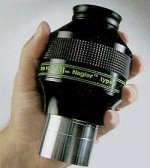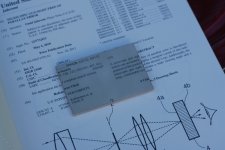Omid
Well-known member

Hi Omid,
Forgive me for not having read your patent, but I recall from some previous discussion that part of your invention involves projection of the image onto a screen, which can then be viewed from any distance or angle. Of course the optics before and after that screen leave plenty of room for creativity! But could you say, if this screen projection is the brightness and resolution limitation that you mention?
We are mostly here familiar with cameras that project the image onto ground glass for composition and focusing--would it be something like that, as far as image "vividness" goes?
Ron
Hello Ron,
Yes, your recollection is correct. The concept is to use a special screen or "device" (not a focusing screen, although that technically works too) positioned at the common focal plane of the objective/eyepiece to expand the diameter of the light cone emitted towards the eyepiece. This will expand the exit pupil and will also alter its position. So, both eye relief and exit pupil diameter are affected. If the exit pupil is expanded sufficiently, then the eye relief becomes uncritical.
You can observe this effect in your own SLR camera. If you look through the view finder of an SLR camera, you will notice that it does not have a critical "eye point" as binoculars and spotting scopes do. The light beam coming out of the view finder is as large as the viewfinder lens area and does not shrink into a small beam if you move your head back.
Here is a video clip that shows the concept of exit pupil expansion demonstrated in binoculars:
https://vimeo.com/178946233
The left barrel has been modified to have expanded exit pupil. The right barrel is conventional (its exit pupil is briefly visible at some point later in the video).
PS. I forgot to say this: I highly appreciate that the BF admins decided to carve out my posts from the original thread and created a dedicated thread for it. I look forward to constructive discussions of this concept and welcome critiquing it as well. As any new idea, it might turn out that there are some technical or practical reasons that make it not viable but lets all think about this and see if it actually has merit. Thank you.
Last edited:






